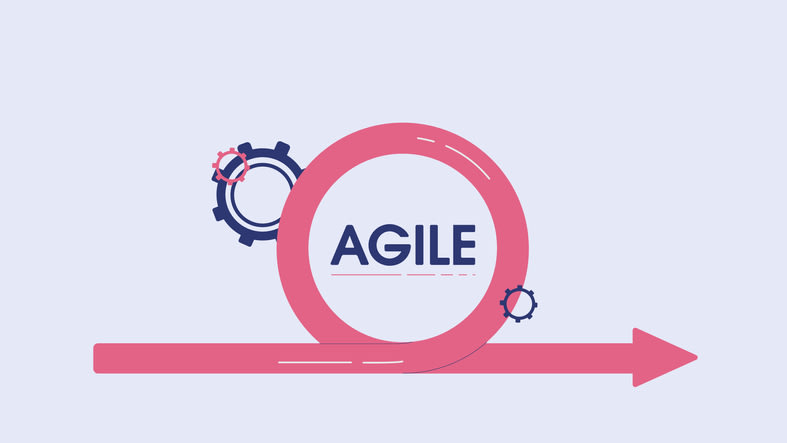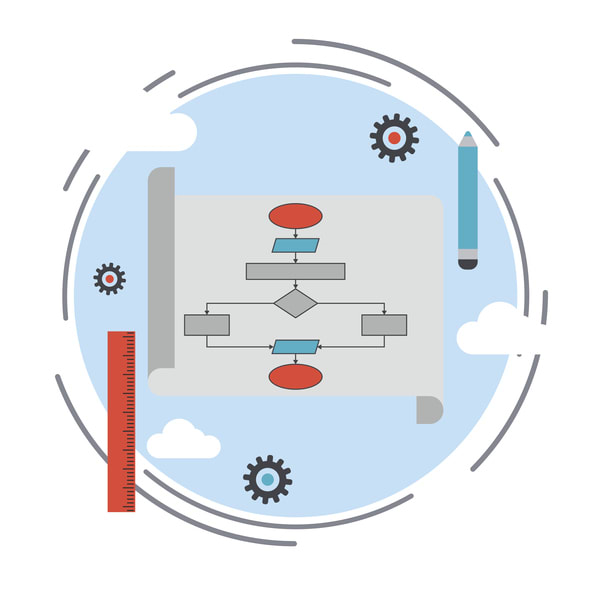Navigating the world of project management can be a daunting task, especially when faced with a plethora of methodologies to choose from. Selecting the right project management methodology not only ensures the success of your project but also empowers your team to work efficiently. In this blog post, we’ll explore various project management methodologies, their pros and cons, and how to choose the best one for your needs. Let’s dive in!
Key Takeaways
- Understand project management methodologies to select the best approach for a given project.
- Agile, Scrum, Kanban and traditional (Waterfall & PRINCE2) methods offer different advantages in various contexts.
- Hybrid approaches such as DSDM combine elements of Waterfall and Agile while other notables like Lean & XP provide additional options
Understanding Project Management Methodologies

The success of any project greatly depends on the selection of an appropriate project management methodology. Given that various methodologies are tailored to different project types and organizational goals, it is important to be familiar with the range of options available. Popular project management methodologies include Agile-based methodologies, traditional methods such as Waterfall and PRINCE2, and hybrid approaches that combine elements of both.
Each project management methodology caters to specific project requirements and team dynamics. Here are some examples:
- Agile methodologies focus on flexibility, adaptability, and iterative processes, making them ideal for projects with changing requirements.
- Traditional methodologies like Waterfall and PRINCE2 offer more structure and are suitable for projects with fixed requirements and well-defined scopes.
- Hybrid methodologies strike a balance between structure and flexibility, allowing teams to adapt to changing project environments while maintaining a degree of control and predictability.
Gaining insight into the array of project management methodologies enables teams and organizations to choose the approach that best fits their projects, thereby enhancing efficiency and success. In the following sections, we’ll explore Agile-based methodologies, traditional methodologies, and hybrid approaches in detail, examining their unique benefits and drawbacks.
Agile-Based Methodologies

Agile-based methodologies, such as agile methodology, focus on flexibility, adaptability, and iterative processes, making them ideal for dynamic environments and projects with changing requirements. These methodologies emphasize collaboration, agility, and receptiveness to data-driven transformation, which are essential for a successful project management body.
This section will shine a light on some widely-used Agile-based methodologies including Scrum, Kanban, and Scrumban.
Scrum: Empowering Small Teams
Scrum is a popular Agile framework designed to facilitate communication, planning, execution, and feedback for small teams throughout the project life cycle. Some key features of Scrum include:
- Small teams of a maximum of nine members
- Working on user stories and requirements from the backlog
- Cross-functional collaboration
- Short cycles of work called sprints, typically lasting two to four weeks
These features help drive progress and ensure effective project management.
Scrum outlines a straightforward set of roles, meetings referred to as Scrum events, and tools to expeditiously, iteratively, and incrementally provide valuable, shippable functionality for the project team. A Scrum master is responsible for facilitating daily meetings, overseeing sprints and sprint retrospectives, and presenting demos to stakeholders, making Scrum a valuable project management method. The Product Owner, on the other hand, is responsible for defining and prioritizing requirements, which is a crucial aspect of project management strategies.
One of the key aspects of Scrum is the emphasis on collaboration and continuous improvement. At a daily scrum meeting, each team member communicates their progress and any challenges they have encountered towards the goal, ensuring smooth progress throughout the project life cycle. A sprint retrospective is a review of the team’s performance after a sprint, allowing them to make any necessary adjustments prior to initiating the subsequent sprint, which is essential for a successful project management body.
Kanban: Visualizing Workflow & Limiting WIP

Kanban is a lean project management methodology that emphasizes visualizing workflow, limiting work in progress (WIP), and optimizing efficiency through continuous evaluation. Kanban utilizes a “Kanban board” to graphically represent project backlogs and monitor project progress, making it an adaptive project framework. Work in Progress (WIP) limits are restrictions on the number of tasks that can be in progress at any single time. This helps to ensure that only a specified number of tasks are present in each column (or on the board overall).
The objective of limiting work in progress in Kanban is to enhance the flow of work as you appraise and optimize the average time to complete items, which is an important aspect of project management strategies. Implementing WIP limits helps project teams to be more effective by avoiding over-extension, and instead concentrating on each task singularly. Kanban is suitable for teams of all sizes, particularly those with hybrid or remote members, and can be effectively used throughout the project life cycle.
The fundamental principles of Kanban involve:
- Visualizing the workflow
- Limiting work in progress
- Making processes explicit
- Regularly assessing possibilities for enhancement
These principles make Kanban one of the effective project management methods. Vanguard, a well-known financial services company, utilized the Kanban enterprise service’s planning (ESP) approach to increase the velocity of their workflow, feedback, and learning, which contributed to the success of their project management body.
Scrumban: Combining Scrum & Kanban
Scrumban is a hybrid project management methodology that combines elements of both Scrum and Kanban, offering a flexible approach that incorporates planning on demand, task limitation, and regular reviews and retrospectives. Scrumban follows a scrum workflow and utilizes a Kanban board with three columns: To Do, Doing and Done to visualize the work throughout the project life cycle. Work in progress limits are employed during the sprint cycle to maintain a steady flow while still integrating project planning, reviews, and retrospectives as appropriate.
The primary advantage of utilizing Scrumban for project teams is that it enables teams to continually draw from the backlog based on their capacity, similar to a kanban framework. This hybrid methodology is most effective when one desires to integrate Scrum and Kanban, making it the right project management methodology for teams that require a combination of both approaches.
Scrumban could be a viable option for teams that require a method to visualize their work, while still embracing the idea of breaking down a project into shorter periods of work throughout the project life cycle. By combining the best of Scrum and Kanban, Scrumban offers a flexible approach that caters to the needs of diverse project teams and environments.
Traditional Methodologies

Traditional methodologies, such as Waterfall and PRINCE2, are more rigid and structured in comparison to Agile methodologies, making them suitable for projects with fixed requirements and well-defined scopes. These methodologies follow a linear approach that offers predictability but limited flexibility.
Waterfall: Linear & Sequential Approach
Waterfall is a traditional, linear, and sequential approach to project management, with each phase completed before moving on to the next. This methodology offers predictability and comprehensive project tracking or documentation, which are important aspects of project management strategies. However, it has some potential drawbacks, such as the lack of flexibility for modifications, the challenge of making alterations to inadequately designed components, and the absence of progress updates to present to the client.
The Waterfall methodology is advantageous for projects with a well-defined scope and timeline, making it suitable for projects with fixed requirements and well-defined scopes. It provides a well-defined plan from beginning to end, with early requirements definition to maximize efficiency. Moreover, comprehensive documentation at each stage ensures continuity regardless of who is involved in the different phases of the project, making it one of the effective project management methods.
However, the linear structure of the Waterfall methodology does not allow for any changes to be made in the event that new requirements or constraints arise, which could potentially lead to an inefficient process or an ineffective design if the process needs to be restarted, posing challenges for project teams. Therefore, it is essential to carefully consider the specific requirements and constraints of a project before selecting a project management methodology such as Waterfall.
PRINCE2: Large-scale Projects with Defined Processes
PRINCE2 (Projects in Controlled Environments) is a comprehensive methodology designed for large-scale projects, with a focus on:
- Clearly defined processes
- Roles
- Responsibilities
- Governance structures
It is an ideal approach for complex IT projects with multiple stakeholders, as it provides a structured approach throughout the project life cycle. PRINCE2 is a popular project management certification and set of best practices and processes designed to equip project managers with the necessary knowledge.
The PRINCE2 methodology is characterized by its governance structure, which consists of a project board responsible for project ownership, definition of team structures, and ensuring project success, as well as a project manager to oversee progress of daily activities. The benefits of utilizing PRINCE2 include clarifying the deliverables, emphasizing the project’s practicality, specifying roles and responsibilities, and endorsing management by exception.
However, PRINCE2 may not be suitable for all types of projects, as it requires a significant investment in training and certification. It is advisable to forgo PRINCE2 methodology if:
- One does not intend to pursue complete certification
- The seven-step process does not align with their projects
- They find themselves excessively customizing (or disregarding) the process stages to the extent that it becomes PINO — “Prince in name only”.
Hybrid Methodologies

Hybrid methodologies combine elements of both agile and traditional approaches, offering a balance between structure and flexibility. These methodologies are designed to cater to the unique needs of diverse project teams and environments, ensuring that the right project management methodology is selected for each specific project.
Dynamic Systems Development Method (DSDM)
Dynamic Systems Development Method (DSDM) is a hybrid methodology that combines the rigidity of the waterfall model with the flexibility of agile, utilizing timeboxing and iterative processes. DSDM is well-suited for teams that desire the flexibility of Agile yet also need to establish cost, quality, and time parameters in the project brief. It focuses on delivering projects within agreed-upon time and budget constraints while maintaining a high level of quality.
DSDM consists of four categories of tasks:
- Musts
- Shoulds
- Coulds
- Won’t-haves
These categories help project teams prioritize tasks and allocate resources accordingly, ensuring that the most critical tasks are addressed first. The DSDM framework also emphasizes strong communication and collaboration between team members and stakeholders, which is essential for successful project management.
One of the key benefits of DSDM is its ability to provide a structured approach while still offering the adaptability of agile methodologies. By blending the best of both worlds, DSDM enables project teams to navigate complex projects with a high degree of flexibility and control. This makes it an attractive option for organizations looking to strike a balance between traditional and agile project management methodologies.
Factors to Consider When Choosing a Project Management Methodology

A variety of factors need to be taken into account when picking a project management methodology. These include the project’s complexity, team size, organizational objectives, flexibility needs and the alignment of the methodology with the team’s values. The complexity of a project can be determined by assessing the number of tasks, stakeholders, resources, and the timeframe available. Team size is pertinent when selecting a project management methodology, as it impacts the quantity of resources available, the duration required to complete the project, and the amount of communication necessary between team members.
Organizational goals are the objectives set by an organization to achieve success. It’s important that the chosen project management methodology is capable of adjusting to changes in the project scope, timeline, and resources. Adhering to team values is essential as it guarantees that the project management approach is consistent with the team’s values and convictions, which can assist in guaranteeing successful project conclusion.
Taking these factors into account will help ensure that the right project management methodology is selected for each specific project, ultimately leading to increased efficiency, better resource allocation, and improved project outcomes.
Real-World Examples of Project Management Methodologies

Valuable insights can be gleaned from real-world examples of project management methodologies, demonstrating how different approaches can be applied successfully across various industries and organizations. For instance, Waterfall methodology has been widely used in software development projects, where requirements are well-defined and unlikely to change. Agile methodologies, such as Scrum and Kanban, have been popular in software development teams that require flexibility and adaptability throughout the project life cycle.
Another example is the use of PRINCE2 in large-scale IT projects with multiple stakeholders. PRINCE2 provides a comprehensive framework that ensures clear communication and effective project governance, ultimately leading to more successful project outcomes. Hybrid methodologies, such as DSDM, have been utilized in projects where teams need both structure and flexibility to navigate complex project environments.
These real-world examples demonstrate the diverse array of project management methodologies available and their unique benefits in different project contexts. By understanding the specific requirements and constraints of each project, teams can select the most suitable methodology to ensure project success.
Other Notable Methodologies
Beyond the methodologies addressed in previous sections, there are a multitude of other significant project management methodologies that merit consideration. Lean project management, for instance, focuses on providing value to stakeholders while eliminating any unnecessary processes. Lean methodology is ideal for teams that are faced with efficiency issues, as it can help reduce waste and optimize process flow in both large corporations and smaller organizations.
eXtreme Programming (XP) is another noteworthy methodology that emphasizes “feedback loops,” ongoing coding, and cycles based on feedback from testing. It is most advantageous for teams in which programmers and stakeholders are in alignment. Critical Path Method (CPM) and Critical Chain Project Management (CCPM) are project management frameworks designed for scheduling and resource allocation in large-scale projects.
Six Sigma, a data-driven approach, aims to reduce waste and improve efficiency in organizations with a minimum of several hundred employees. By considering these additional methodologies, teams can further expand their project management toolkit and select the most appropriate approach for their specific project needs.
Summary
In conclusion, selecting the right project management methodology is crucial for the success of any project. By understanding the various methodologies available, such as Agile-based, traditional, and hybrid approaches, teams can make informed decisions based on project complexity, team size, organizational goals, flexibility requirements, and alignment with team values. Whether you’re working on a small-scale project with rapidly changing requirements or a large-scale project with well-defined scopes, choosing the most suitable project management methodology will ensure efficiency, effective resource allocation, and ultimately, project success.
Frequently Asked Questions
Project management methodologies are a set of principles, tools and techniques that enable project managers to plan, execute and manage their projects effectively, while facilitating team collaboration.
The three main methodologies of project management are Waterfall, Agile and Lean. Critical Path Method (CMP), Critical Chain Project Management, Scrum, Kanban, Extreme Programming (XP) and Project Management Body of Knowledge (PMBOK) are some of the most commonly used approaches.
Agile project management is focused on adaptability and iteration, whereas traditional project management emphasizes structure and pre-defined scope.
Popular Agile-based methodologies include Scrum, Kanban, and Scrumban.
A hybrid project management methodology works by combining the best of both Agile and traditional approaches, providing the necessary structure and flexibility to get the job done. This approach allows teams to be more agile and responsive to changing requirements, while still providing the structure and guidance needed to ensure successful project completion.





